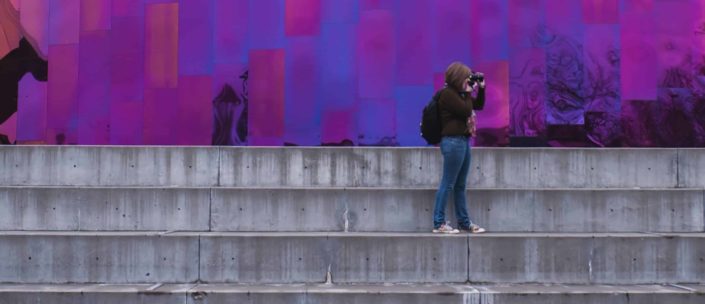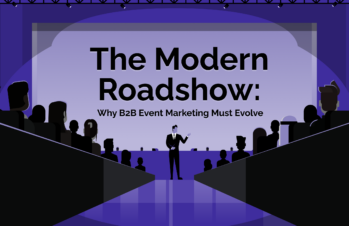Defining experiential marketing
What is experiential marketing and how is it different from traditional marketing?
CMO by Adobe defines experiential marketing as “a mutually beneficial interaction between customer and brand in an authentically branded engagement.” Instead of presenting audiences with traditional, two-dimensional ads, experiential marketing creates events or gatherings. It’s more of a dialogue than a presentation, a genuine interchange more so than a pitch.
According to EventTrack, 65 percent of consumers say experiential marketing helps them have a better understanding of a product or a service. On top of that, 70 percent of consumers become regular customers after attending an experiential marketing event. When a consumer is fully-immersed in the positive experience of a brand, they will come to associate those positive feelings with the brand itself, thereby increasing the chances of future purchases.
Surprising demographics
While Millennials are about to become the largest living generation in the United States, they aren’t alone in preferring experiential marketing over non-participative advertising. Baby Boomers and Gen X are also partial. For example, the traveling AARP Block Party incorporates food, games, giveaways, celebrity appearances, and information sessions into their experiential marketing.
Remember, it’s not just about creating impressive experiences offline. Effective experiential marketing combines events in real-time with online bonuses, even when you’re promoting something for older generations. You are looking to form lasting relationships with customers, connections that grow beyond the event.
Marketers benefit too
While experiential marketing should be catered to your consumers and attendees, marketers can learn from the experience as well. According to Bizzabo, 80 percent of marketers believe that live events are critical to their company’s success. Likewise, 95 percent of marketers agree that live events provide attendees with valuable opportunity to form in-person connections in an increasingly digital world.
Here are some real examples of experiential marketing. As you will see, they can highly differ in approaches, goals, and appearances. The opportunities for experiential marketing are truly endless.
T Mobile: Angry Birds Live
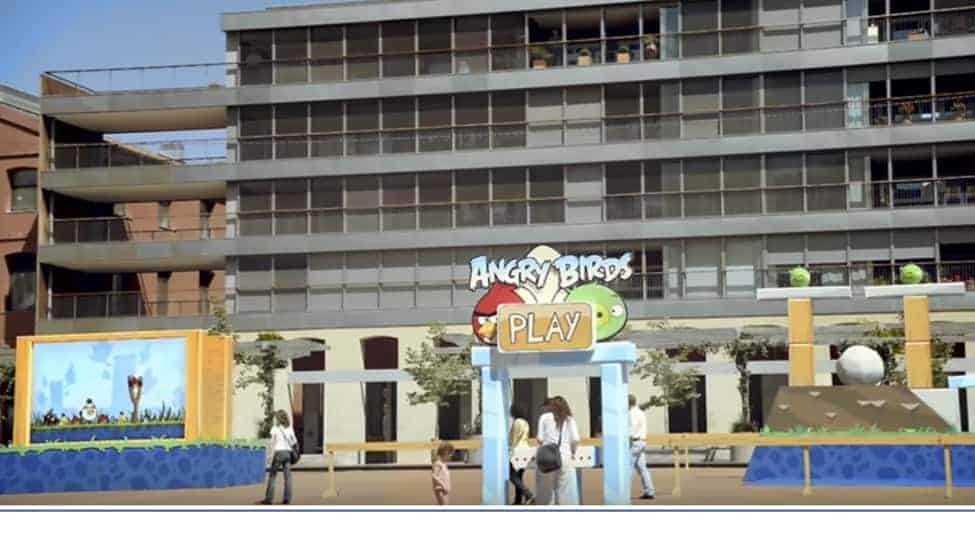 In 2011, Saatchi & Saatchi U.K. partnered with Rovio, the maker of Angry Birds, to construct a life-size version of their game. The installation was set up in Barcelona, Spain for Deutsche Telekom. Anyone was welcome to participate. By using a communal cell phone, visitors “launched monster size bird cannons across a teetering display of blocks in hopes of exploding some menacing oinkers.” It made for an incredibly entertaining and amusing experience.
In 2011, Saatchi & Saatchi U.K. partnered with Rovio, the maker of Angry Birds, to construct a life-size version of their game. The installation was set up in Barcelona, Spain for Deutsche Telekom. Anyone was welcome to participate. By using a communal cell phone, visitors “launched monster size bird cannons across a teetering display of blocks in hopes of exploding some menacing oinkers.” It made for an incredibly entertaining and amusing experience.
Measuring the success of an experiential marketing campaign depends on the brand’s specific goals. Saatchi & Saatchi U.K. wanted to “preserve the look, feel, and magic” of Angry Birds. The agency also wanted to “surprise a real-life crowd that would grow to several hundred people.” The installation certainly succeeded in maintaining the spirit of the game, as well as grabbing the attention of many—live at the event, and after, via video and social media.
Chase: “Social Media Genius Bar”
At the Chase for Business Conference, Zen Media created a “Social Media Genius Bar.” In the vein of Apple, Zen “Geniuses” set up shop and spoke with business owners individually about social media and digital marketing.
The result? Over a hundred small businesses walked away with a stronger relationship with Chase and a newfound knowledge about how digital marketing and social media can help them grow their business.
Because the Social Media Genius Bar was such a success, we wanted to create more opportunities to educate and connect. That’s how the Chase BizMobile came about. The Chase BizMobile literally meets people where they are, and is fueled by a mission to connect small business owners and aspiring entrepreneurs to the expertise they need, whether that be digital marketing, or access to capital.
By learning about customers’ needs, Chase for Business became more than a bank, it became an engaged partner, truly dedicated to their customers’ ongoing success.
Disney: McStuffins Toy Hospital
Based on Disney Junior’s award-winning series, “Doc McStuffins,” a TV show about a six year-old girl who can heal toys in her imaginary clinic, Disney created the live and interactive “McStuffins Toy Hospital.”
The toy hospital toured in children’s museums across the United States. At McStuffins Toy Hospital, children assisted Doc in performing a check-up on a giant teddy bear. There was also a wing dedicated to toy pets, “Pet Vet,” and a Nursery, where baby toys were fed and tended to. In addition to creating a space for engaging, imaginative play, the hands-on activities taught children lessons on health and wellness.
Amazon and “Jurassic World: Fallen Kingdom”
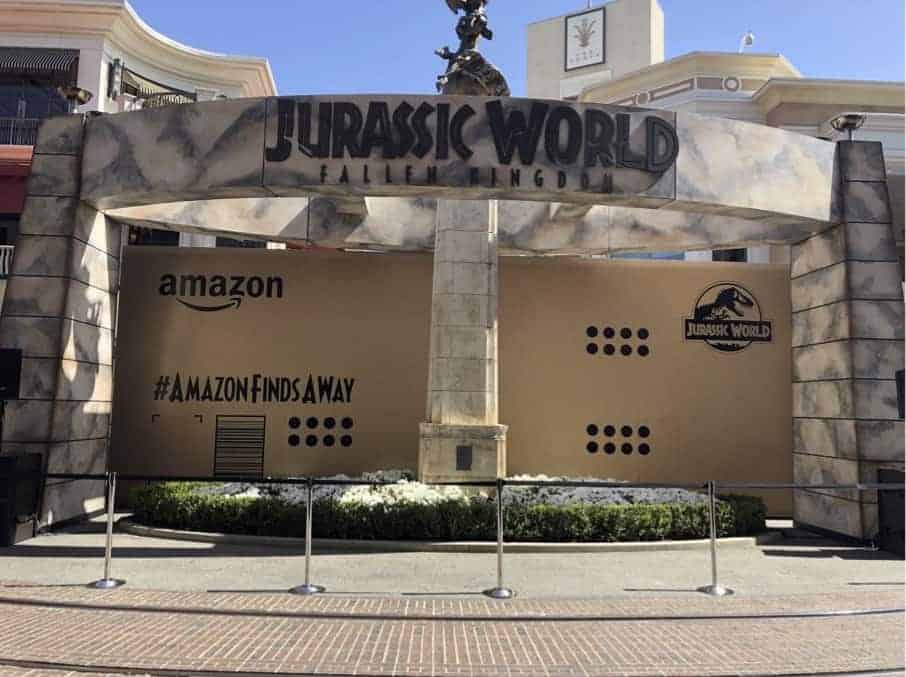
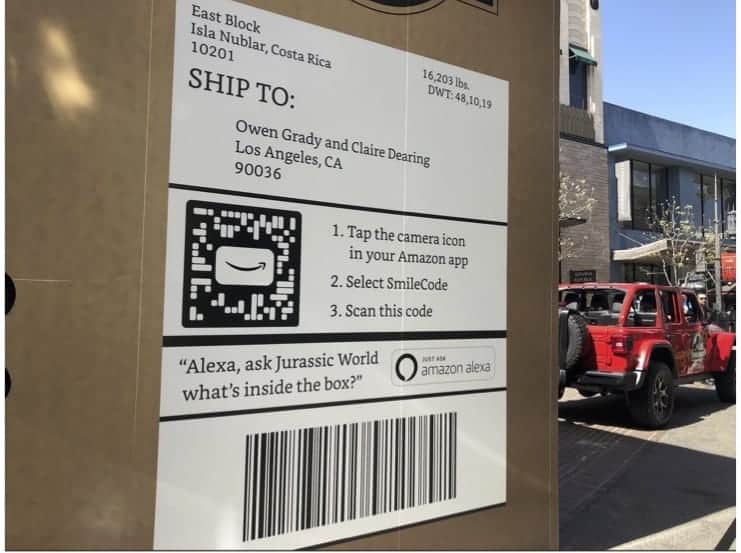
On May 30th, 2018, Amazon delivered a colossal 40-foot long box to The Grove mall in Los Angeles, California. When Grove visitors walked by the package, loud, growling noises emanated from the box’s air holes. The shipping label, made out to “Jurassic World: Fallen Kingdom’s” main characters, Owen Grady and Claire Dearing, also featured an Amazon SmileCode, which directed users to a landing page with discounted tickets for the new film. The hashtag, #AmazonFindsAWay, created an online community for sharing photos and sharing guesses of what was inside the box. All Alexa-enabled devices could answer the question, “Alexa, ask Jurassic World what’s inside the box?” with additional clues. On June 2nd, 2018 “Jurassic World: Fallen Kingdom” stars Chris Pratt and Bryce Dallas Howard opened box and revealed its contents in front of the large crowd. Inside the box was a life-size Tyrannosaurus rex.
This experiential marketing campaign managed to bring three brands together: Amazon, “Jurassic World: Fallen Kingdom,” and Jeep Wrangler. The package and its big reveal garnered a great deal of attention on social media and by word of mouth in Los Angeles. “Jurassic World: Fallen Kingdom” earned $150 million at the box office opening weekend, the second-best opening weekend for Universal Studios of all time.
Any business, large or small, can use experiential marketing to significantly influence their consumer and make an impact on their audience at large. Interacting with customers face-to-face builds a partnership based on trust and mutual understanding. People are wired to crave connection. Experiential marketing taps into this fundamental need for consumers and businesses alike.

